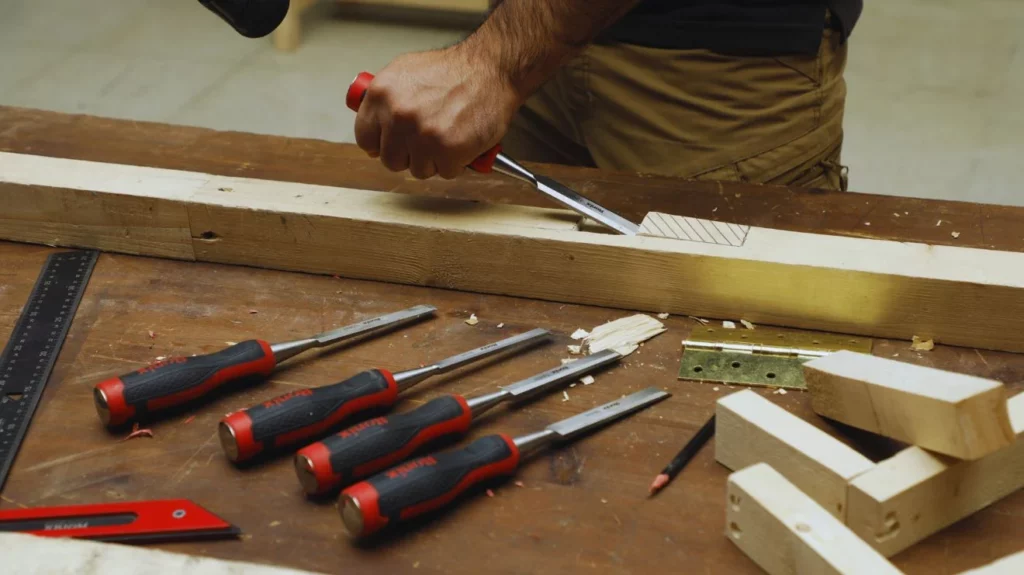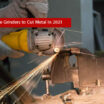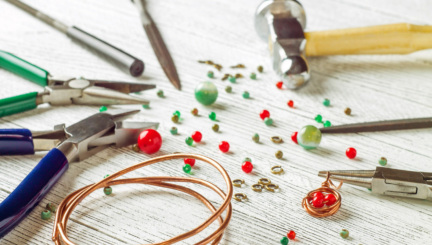- 10min
- 21483
- 0
Chisels have a long history. They are one of the earliest tools invented by humans, as backed by the archaeological evidence of these tools. They are used for cutting, chipping, smoothing, and carving into different materials including wood, brick, concrete, and even metal. Nowadays, chisels are mostly used in woodworking and carpentry.

There are many different types of wood chisels because of the various uses they have in woodworking. Each type of wood chisel has a different shape and it gives the user the ability to use the tool with a different level of precision, power, and control.
There are many applications for chisels in woodworking. For woodworking purposes, these tools are used for chopping, splitting, cutting edges, smoothing edges, making chamfers, making joints, and carving patterns.

Even though power tools have replaced a lot of hand tools in modern woodworking, chisels still have their special place. You might think it’s because of their charm that they haven’t disappeared but we are here to show you how useful these tools are. So, dive in to read about all the different uses these tools have and all their special varieties.
In the final section of this article, we will talk about what you need to look for in a wood chisel if you are interested in buying one.
Types of Wood Chisels
In this section, we will go through all the different types of wood chisels and their applications. Wood chisels all have their unique features and uses. The most common type of this product is the bench or the bevel-edged chisel. Other common types of these tools are paring mortise and firmer chisels.
Get yourself ready to delve into the world of chisels for woodworking. We will mention all the different kinds, including the ones that we already mentioned.
Bench Chisels (Bevel-Edged Chisels)
Bench chisels are the most commonly used type of chisels, especially by DIYers, because they can be used for a large range of woodworking purposes which makes them essential in a woodworker’s arsenal.
These tools are the most versatile types of wood chisels. They have a flat, beveled-edge blade and they are used for a variety of cuts, from fine light cuts and trims to more rugged tasks like cutting mortises. These tools come in a variety of sizes and there are also varities of bench chisels that have beveled and tapered sides which makes them ideal for clearing out joints.
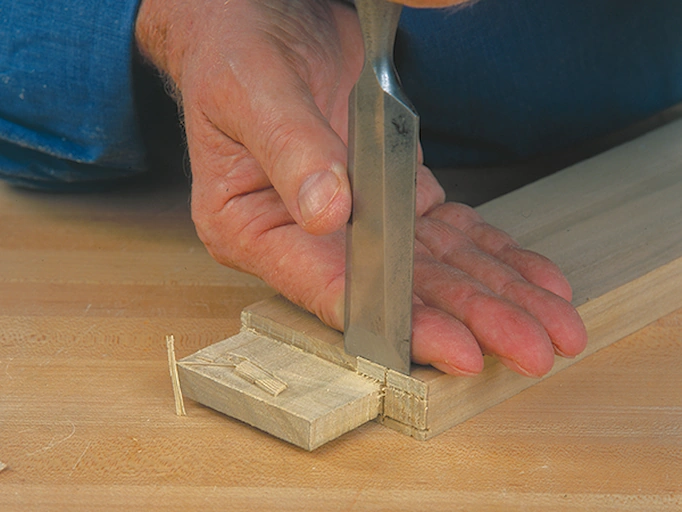
Firmer Chisels
These tools are very similar to bench chisels and they come in the same length. They are thicker than bench chisels and usually have square sides. These tools are used for more heavy-duty applications, such as chopping and shaping wood. Their handle is also made to be used with more force and they can be used with mallets. They are also among the types of chisels used in carpentry in addition to woodworking.
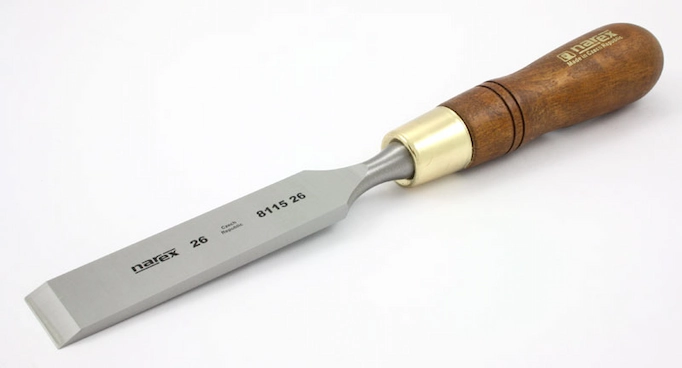
Mortise Chisels
These chisels are thicker and more powerful tools that are used for making mortise cuts. Mortise cuts are deep rectangular or square cuts that are used for joining two pieces of wood. These cuts are used in different applications such as making furniture, doors, door frames, and windows.
Mortise chisels have long, thick blades made from tough material with a straight cutting edge. All of these features make them ideal for more heavy-duty and deep chopping cuts.
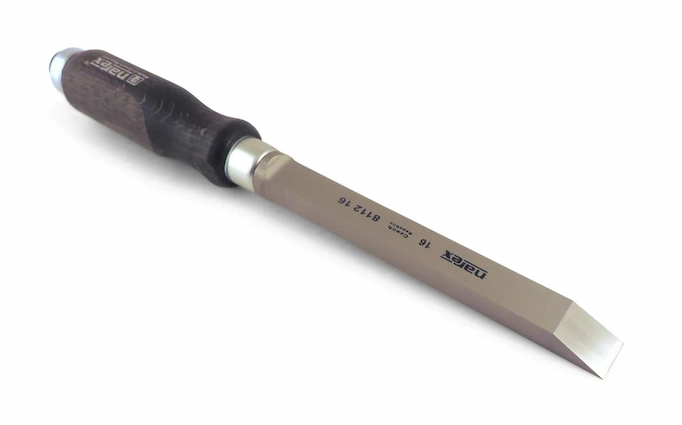
Paring Chisels
Paring chisels are given this name because they are special tools for making cuts with the same name. Unlike more forceful types of wood cutting like chopping wood, paring cuts are finer and more controlled cuts to shave off thin pieces of wood. These tools have longer and thinner blades that are beveled at a smaller angle, making them perfect for peeling off thin slices or creating fine negative patterns in wood. Their handles are also lightweight and thin which gives their user a lot more control. The length of these tools makes them a lot more maneuverable.
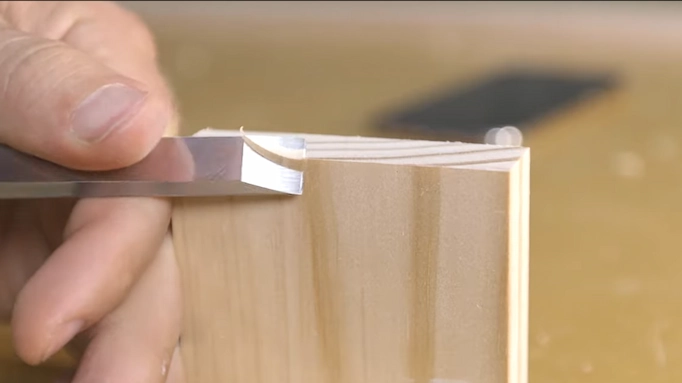
Corner Chisels
These tools create one of the most unique types of chisels for woodworking. They have an L shape and are specialized for cutting 90-degree corners and square recesses in wood. They are also used for tidying up mortise cuts afterward. They can also be used to create a space for hinges.
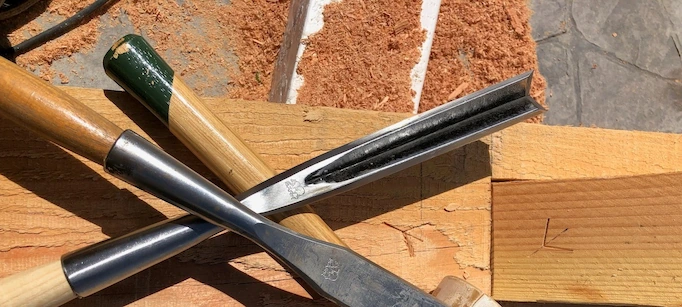
Dovetail Chisels
These tools are also one of the most unique types of wood chisels. Like most other chisels that we reviewed so far, their name also describes their application. These tools are designed to cut, shape, and clear out dovetail sockets (joints). And obviously, dovetail joints resemble dovetails!
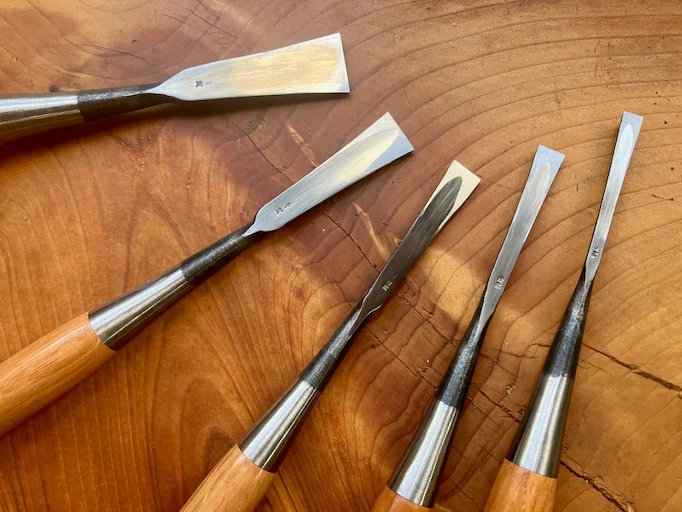
Butt Chisels
These tools are the same as bench chisels with the difference that they are much smaller in size, making them a unique variety. They are used for cutting and carving in confined spaces.
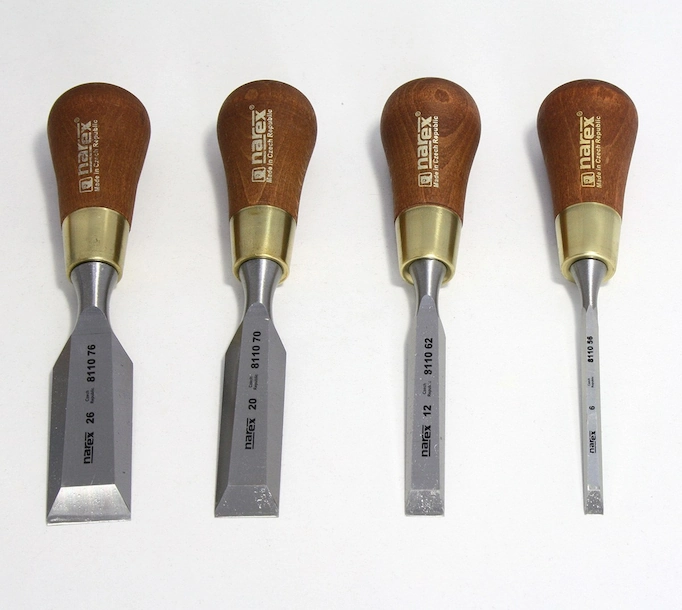
Skew Chisel
These tools have two beveled edges and a long, angled blade. They are used for finish carving and they are used with wooden lathes for carving out shapes. These types of chisels for woodworking are ideal for intricate and detailed woodworking. They have to be constantly sharpened to keep a sharp edge for fine woodworking.
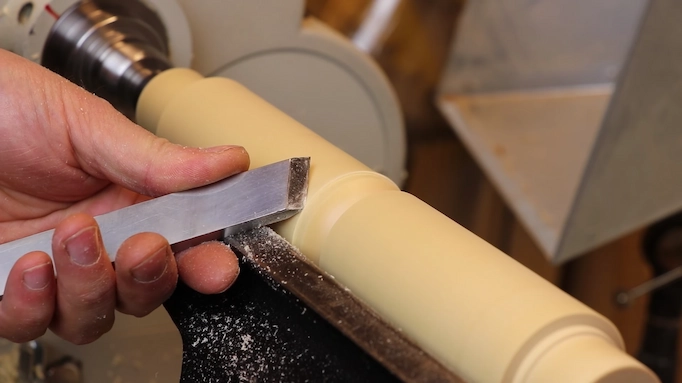
Carpentry Chisel
These chisels are basically the same as bench chisels but they usually have a handle with a long metal piece inside it that can be struck by a mallet to directly transfer power to the blade. They usually have transparent rubber handles and they are used for heavy-duty purposes. Despite their name, they are only one of the different types of chisels used in carpentry.
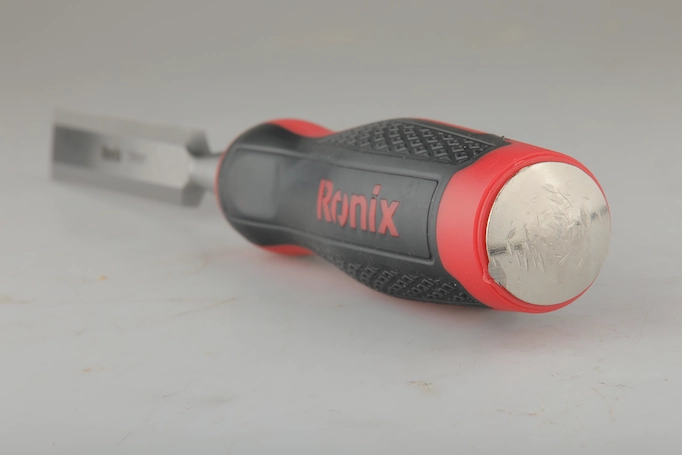
Gouge Chisel
These tools are one of the most specialized types of woodworking chisels. They are used for more aesthetic applications such as carving grooves and patterns on wood. They are also used to give circular shapes to furniture. They are also used for hollowing.
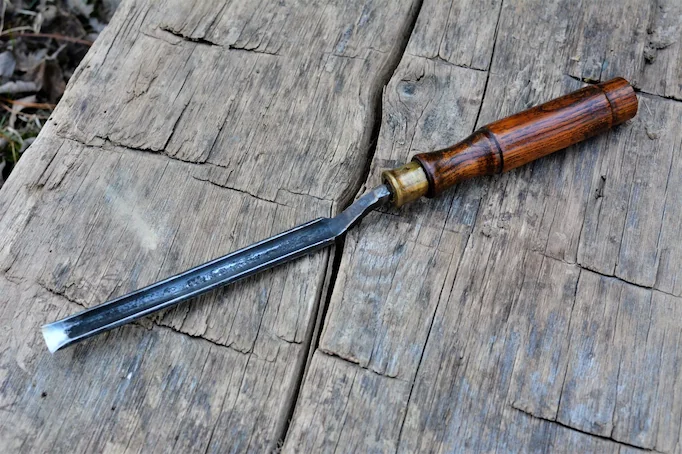
Japanese Chisel
These chisels are different from Western chisels in their form and construction. They can be different in terms of their blade shape and handle There are a large number of Japanese chisels and each one has its unique characteristics for different tasks.
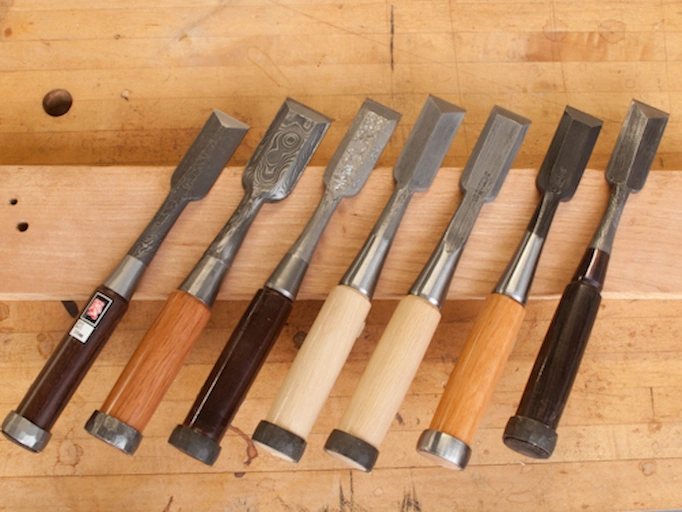
Types of Chisels for Woodworking Buying Guide
There are simply too many types of chisels for woodworking. The diversity that woodworking chisels have can certainly make newcomers to woodworking terribly confused.
Therefore, the first thing that you have to think about in order to buy your first set of chisels for woodworking is your particular application.
Now that you have a general knowledge of different types of wood chisels and their applications, we will go through all the different factors to consider for buying your first chisel or your first set of chisels if you are a newcomer in this field.
If you are a more seasoned woodworker, then perhaps this guide can help you upgrade your set of chisels in a way that can help you achieve a more efficient and productive woodworking regimen.

Your Application
There are plenty of uses for these tools. That’s why there are so many different types of wood chisels. You first need to determine what you are gonna use your chisels for. Are you gonna do wood carving? Are you gonna make mortise joints or dovetail joints? Is paring your only purpose for chisels? Maybe you wanna use a wood lathe?
You wanna think about all these questions before buying a chisel or a set of chisels. Otherwise, you will probably waste a lot of money on things you don’t need and your chisels will lie around in your workshop forever with no purpose, other than making the environment look prettier and more professional. So, figure out your woodworking needs and intentions and go look at the previous section again to familiarize yourself even more with different types of wood chisels. You will probably always need a bench chisel though. They are versatile tools that all the workshops will need. A bench chisel should be the first one you buy.
Blade Material
You should pay extra attention to the material that the blades of your chisels are made out of. You always want something with a lot of durability. You will also need a different level of blade strength depending on the task and the type of chisel. The most popular type of blade material for chisels is high-carbon steel. This type of steel is sharp and provides ideal edge retention and easier sharpening.
Tool steel and other types of steel alloy are also popular for heavy-duty chisel blades. Stainless steel is ideal for humid environments because of its resistance to rust and corrosion. Japanese chisel blades are made of blades that are sandwiched inside other materials. This technique is called blade lamination.
Make sure the material of the chisel that you buy matches your preferred application and also pay attention to the hardness rating (HRC) of your chisels.
Blade Handle
You should always pay attention to the design, length, and material of the handle of your chisel. Answering the following questions can help you find the right type of handle for your applications. What is your purpose? Are you trying to do fine and intricate work or are you trying to do more heavy-duty work? Are you gonna use your handle with your hands or with a mallet?
Longer blades and handles are better suited for more controlled and intricate work. If you are doing more heavy-duty work, you need to make sure that you have a strong handle. It is important to note that some handles are not suitable for being used with a mallet and they could break.
Blade Design
Different blade designs on different types of wood chisels are catered for different purposes. Thicker blades are designed for more heavy-duty purposes and the purpose of thinner blades is for doing lighter tasks such as paring. You need to make sure that the blade design suits your purpose.
You also need to make sure if beveled edges or sides are present in the blade or not. The angle of the bevel is also extremely important. Sharper angles are usually for doing more heavy-duty work. Some blades have beveled sides for fitting into different joints, such as dovetail joints for doing paring and trimming work inside the joints.
Size
It goes without saying. You need to find the right size depending on the scale of your work. Pay attention to the length of the blade itself, the length of the handle, and the thickness and width of the blade and the handle.
Budget
You don’t need to break the bank on a large wood chisel set. Buy one or two high-quality chisels if you are a beginner or DIYer. Later on, you can buy more tools when your skill improves.
Brands
Narex, Stanley, and Lie-Nielsen are the top brands in the woodworking chisel game. There are a lot of good brands in the market that make different types of woodworking chisels with high quality at an affordable price, like Ronix. If you are looking for a brand that makes different types of chisels used in carpentry and woodworking with high quality at an affordable price, take a look at our vast catalog of chisels.
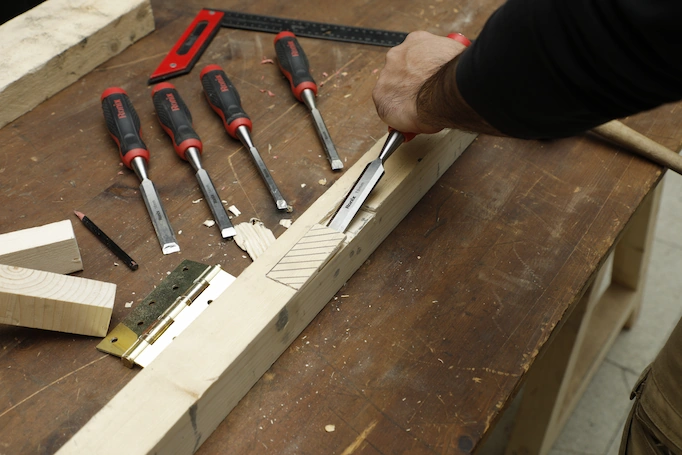
FAQ
What are the different types of wood chisels available for woodworking?
Bench chisels (bevel-edged chisels), paring chisels, mortise chisels, and firmer chisels are the most popular types of wood chisels that are used in woodworking. There are other types of chisels available that are more specialized.
How do bench chisels differ from mortise chisels, and what are their specific uses?
Bench chisels are multi-purpose chisels that can be used in several applications such as paring, chopping, and general shaping. Mortise chisels though, are more catered for doing mortise cuts which is a more heavy-duty task.

Ronix
20 November 2023
